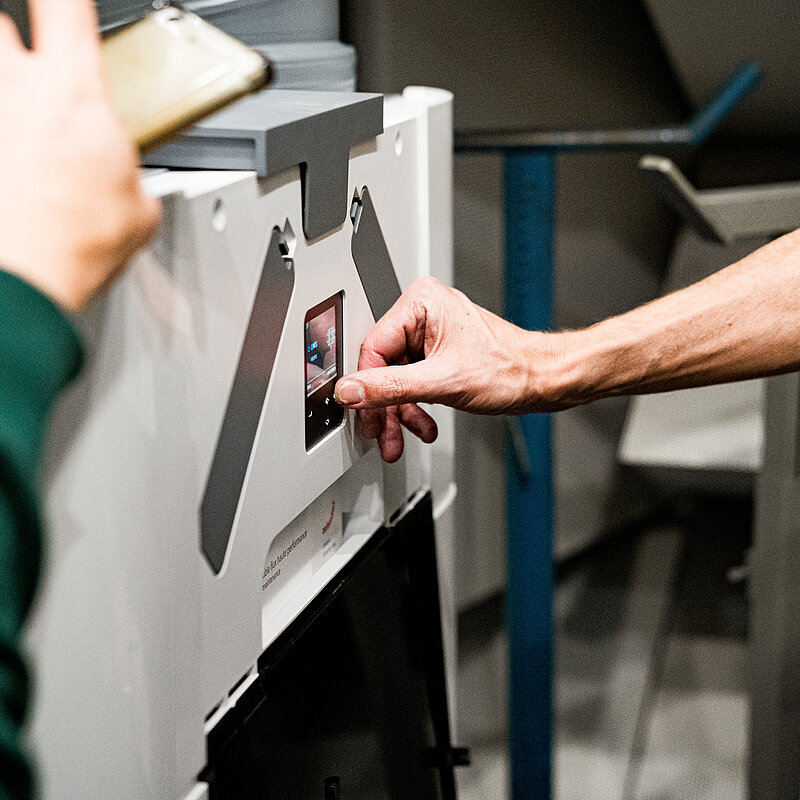
6 Common Mistakes when Installing and Commissioning Ventilation
…and how to avoid them!
A high-quality ventilation system keeps an indoor environment pleasant and removes harmful pollutants. However, it's vital to install a ventilation system properly; otherwise you quickly lose out on any benefits.
We spoke to Marco van Alen, Account Manager and a former trainer at Zehnder, about the six most common issues when installing and commissioning a ventilation system. Read on to see how to install and commission with complete confidence.
The dry siphon stops moisture and odours from entering a building through the ventilation system. However, we typically encounter three key mistakes when it comes to the dry siphon in a ventilation system:
For example, if you place the dry siphon on the side of the intake air instead of the exhaust air, condensation will remain in the heat recovery unit, leading to leaks, short circuits and severe damage. What's worse: as condensation mainly occurs in winter, you might not know there's a problem until it's too late.
Marco van Alen, Account Manager East Netherlands

You want to ensure that any ventilation systems you install function as quietly as possible. A ventilation system in a space like a living room or bedroom must not produce noise levels over 30 dB(A). To give you some context, this is the same noise level as a whispered conversation.
To ensure this low noise level, silencers aren't just nice to have: they're a must. Otherwise you run the risk of your ventilation system annoying building residents.
If you use silencers, ensure that they're not forced into a complicated bend. This can increase resistance and lead to extra noise, meaning you lose the benefits a silencer can offer.
One of the most common mistakes made when commissioning the ventilation system is starting at the valves. To ensure efficiency, commissioning should start with the ventilation unit.
Here's an example: let's say you need a flow rate of 200 m³/h but the measured flow rate is closer to 300 m³/h. To adjust this, you 'throttle' or close the air valves until you reach 200 m³/h.
By doing so, the total airflow is not reduced. Instead, the ventilation unit tries extra hard to push the air through the small gaps in the valves, meaning noise and draughts.
If the air flow rate is too high, the correct step is to reduce the air flow rate on the ventilation unit. This doesn't just mean a nicer home environment, but energy savings too!
Before you start adjusting the airflow in a living space, you must know and measure the total airflow for the home. To do this properly, the valves must be fully open.
A closed or semi-closed valve increases air resistance, giving you an inaccurate flow rate and leading to issues like draughts, noise and high electricity bills.
Is the valve furthest away from the ventilation unit partially or fully throttled? The ventilation unit is likely to run unnecessarily fast, making it more expensive, noisier and less environmentally friendly.
Avoid this error by starting any commissioning with all valves open and setting up the total air flow rate on the ventilation unit. Then, after commissioning the other valves, you should have just enough air left for the last room.
The sixth and final common mistake is using pleated bends rather than smooth ones. Many installers use pleated bends as they're cheaper, but this ultimately costs the home-owner money in the long term.
The air passing through the bends collides with the folds, creating extra resistance, meaning that the ventilation unit must run faster to keep up. This results in increased noise and energy bills. In other words: not the ideal situation for the residents.
If you're new to installing ventilation systems or want to fine-tune your knowledge, the Zehnder Academy is here to help.
Free of charge, the Zehnder Academy is the perfect place to learn about installation, discuss experiences with like-minded people, and practise without consequences. Plus, we make the training sessions fun and engaging to keep you invested in learning!
Find your training course at one of our worldwide locations.
Worldwide locations